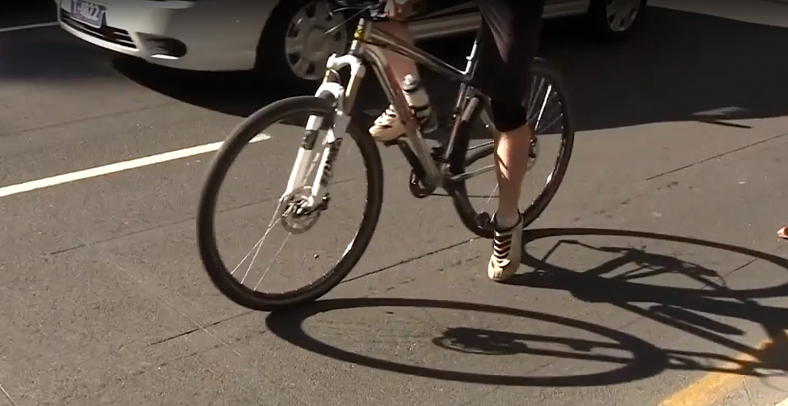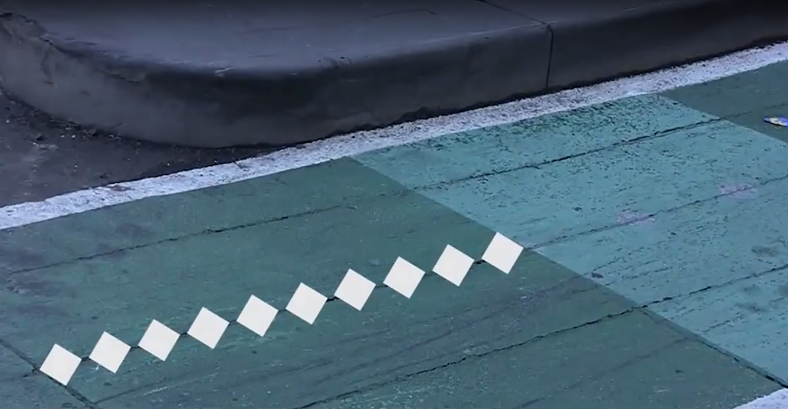Bicycle detection at traffic lights
Bicycles are detected at traffic signals using in-pavement inductive loops. Knowing how these loops work will assist you in being detected.
Traffic light loops
Most traffic lights in NSW are controlled by loops. These are embedded in the road surface close to the stop line at a signalised intersection.
Loops operate through a magnetic wave. When a car disrupts the wave, the signal detects that a car is at the lights. Sometimes bicycles do not trigger the loop to change the lights, simply because they do not contain as much metal as cars.
How in-pavement inductive loops work
Inductive loop detectors produce an electromagnetic field which, in turn, detects metallic objects.
When a metallic object passes over and remains on the detector, a demand is placed for your movement in the traffic signal cycle.
If the metallic object, e.g. bicycle or car, moves away from the detection zone, the demand is cancelled.

Best place to stop to be detected
The detector loops are generally placed in the middle of the lane just behind the stop line, so this is the best place to position your bike to be detected.
When you stop, stay on the loop. If you roll off the loop and can no longer be detected, you may not get a turn when the lights change.


Carbon fibre bikes
The more metal you have on your bike, the easier it is to be detected. However, carbon fibre bikes usually have some metal in the pedals or wheels.
The inductive loop detectors should be sensitive enough to detect even these small amounts of metal if your bike is positioned in the best place for detection.
Bicycle detection at traffic lights video

Bicycles - traffic signals
Learn how bicycles are detected at traffic lights, and the best places to stop, in this short Transport video.
Green lights and cycleways
During each traffic signal cycle, all road users who have been detected will get a chance to go. Cycle lengths are kept as short as possible to minimise delays.
Where there are several different types of road users or lots of turning movements, each of these movements has to be given a phase in the cycle.
During the cycle, if a particular movement is not detected, the signals can skip this phase and may either shorten the cycle length or reallocate the time to other phases.
Because of the consistently high numbers of all road users in the Sydney CBD, bicycle and pedestrian phases are automatically introduced in each cycle during peak traffic times.
Traffic signal coordination
Traffic signal coordination is normally provided to modes of transport with the highest public benefit, ie peak traffic flow, public transport or heavy truck movements.
Coordination is also most effective where traffic flows are relatively high, when traffic arrives in platoons and is travelling at known speeds, such as posted speed limits.
The differing speeds at which bicycle riders travel prevent effective traffic signal coordination along cycleways. Coordination is even more difficult where there are gradients because of the speed differential between riders going uphill versus those going down.
Traffic signal coordination on cycleways in heavily urbanised and congested areas such as the Sydney CBD, is further complicated because of the demands placed on the system by many other road users. The system is continually adapting to these demands, and signal phasing and cycle lengths are constantly changing according to the traffic conditions.
If you're not detected
If you believe you have not been detected at a particular location, please let us know.
Report the issue by calling 131 700 and a maintenance crew will investigate.